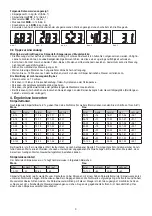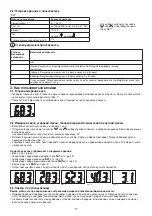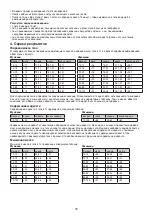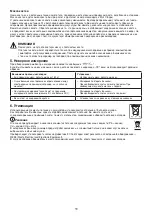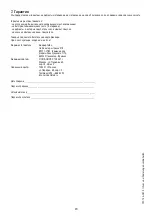
7
Degrees of activity
Degrees of activity
Physical activity
1
None.
2
Low: A small amount of light physical effort (e.g. short walks, light garden work, gymnastic exercises).
3
Medium: Physical effort for 30 minutes at least 2 to 4 times a week.
4
High: Physical effort for 30 minutes at least 4 to 6 times a week.
5
Very high: Intensive physical effort, intensive training or hard physical work for at least one hour daily.
3. Operation
3.1 Measuring weight only
• Stand on the scale without moving about and distribute your weight evenly on both legs. The scale immediately begins to
measure your weight. Your measured weight is displayed shortly after this (Fig 1).
• The scale switches off a few seconds after you step down from it.
Fig. 1
3.2 Measurement of weight, body fat percentage and body water content, muscle percentage and bone mass
• Switch on the scale (tap the standing surface).
• Select the memory preset where your basic personal data are stored by pressing the
or
button repeatedly. The data
are displayed consecutively until “
0.0
” appears.
• Step onto the scale barefoot and make sure you’re standing on both electrodes. First your body weight is determined and
displayed (Fig. 1).
• Remain on the scale and avoid moving; your body fat is being analysed. This may take a few seconds.
The following data are displayed:
• Weight in kg (lb, st) (Fig. 1)
• Body fat percentage
FAT
in % (Fig. 2)
• Water percentage
BW
in % (Fig. 3)
• Muscle percentage
MUS
in % (Fig. 4)
• Bone mass in
BON
in kg (Fig. 5)
• Now all measured values are displayed consecutively and the scale switches off.
Fig. 2
Fig. 3
Fig. 4
Fig. 5
Fig. 1
3.3 Tips for using the scale
Important when measuring body fat/body water/muscle percentage:
• The measurement may only be carried out while barefoot and it is helpful if the soles of your feet are slightly damp. Complete-
ly dry soles can result in unsatisfactory results, as they have insufficient conductivity.
• Your feet, legs, calves and thighs must not touch each other, as otherwise the measurement cannot be performed correctly.
• Stand still during the measurement.
• Wait several hours (6-8) after unusually strenuous activity.
• Wait approx. 15 minutes after getting out of bed so that the water in your body can be distributed.
The measurement is not reliable for:
• Children under approx. 10 years of age.
• Persons with fever, undergoing dialysis, with symptoms of edema or osteoporosis.
• Persons taking cardiovascular medication.
• Persons taking vascodialating or vascoconstricting medications.
• Persons with substantial anatomical deviations in the legs relative to their total height (leg length considerably shorter or lon-
ger than usual).




